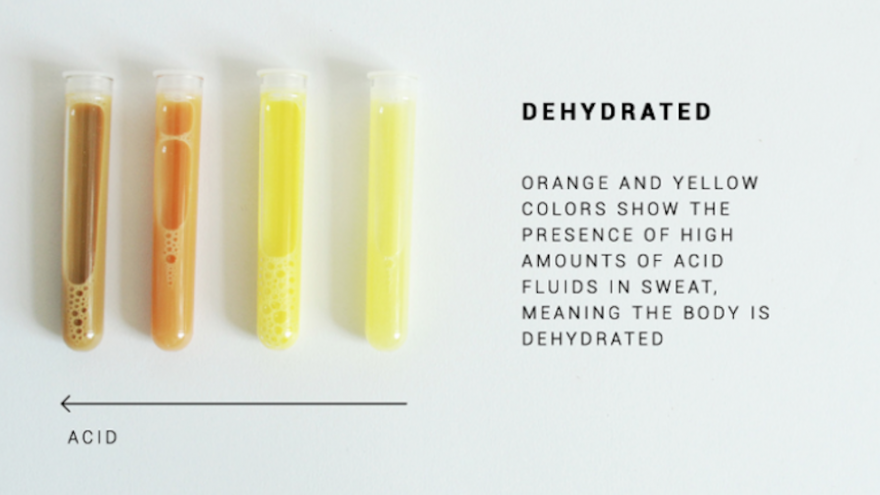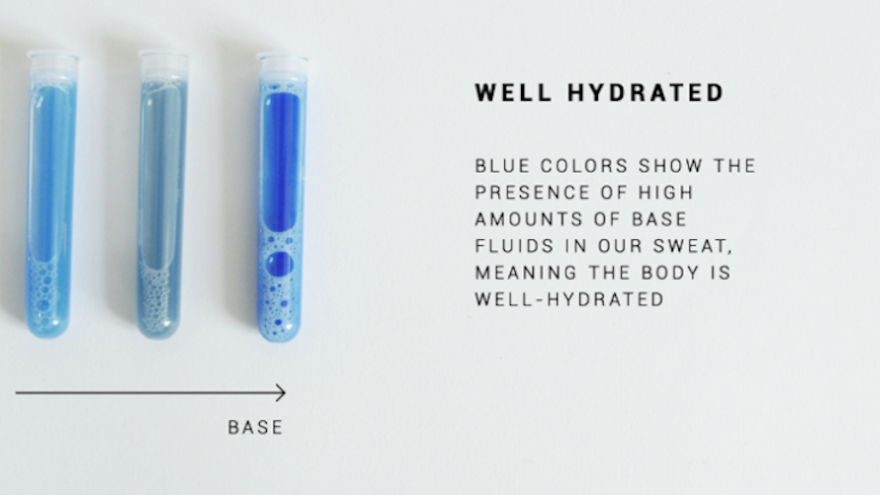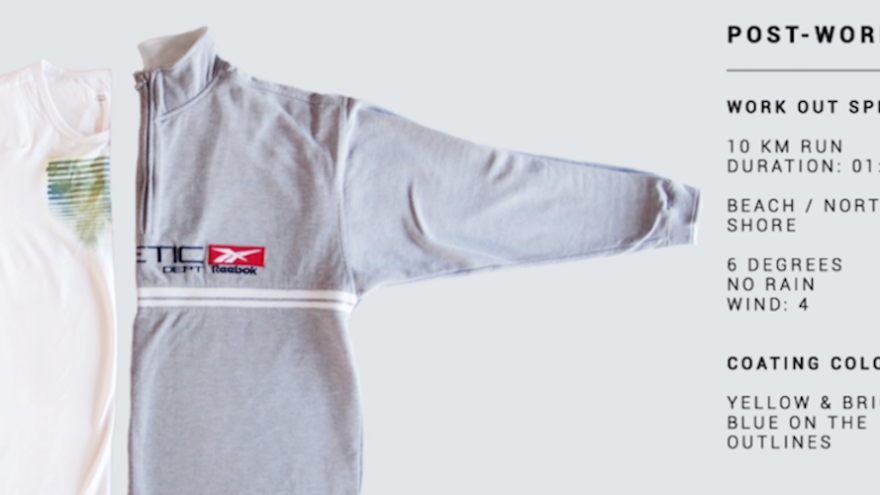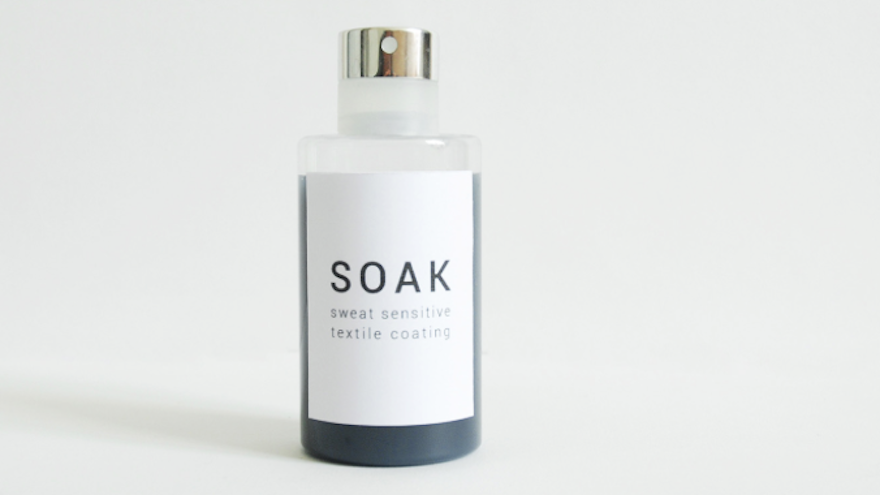Water is the single largest component of the human body, comprising about two-thirds of a healthy human body. Because of our dependence on water to function normally, the human body becomes negatively affected by a lack of water intake after even a few hours. At just two per cent water loss, signs of dehydration start to show. To prevent dehydration before it sets in, designer and researcher Paulien Routs has designed a textile coating for clothes that warn the wearer to hydrate.
The coating uses a colour spectrum to alert the user to danger by testing the amount of water and acid in sweat. A bright blue colour post-workout means the user is sufficiently hydrated. Shades of green mean the wearer is hydrated enough but things could be better. Shades of yellow to brown mean there is a high acid content in sweat, signalling dehydration.
“SOAK is my answer to body-monitoring apps and devices. I like to take on a strong body-centred approach in my work. I wanted to create interaction between a wearer and his body that gives insight into the status of their health,” says Routs. “In a way it’s an extension of the body’s natural signals.”
Routs describes her approach as "biotechnology and the fashioned body", combining tech and the natural form.
Technology is the counterbalance of nature, and the interaction between those two notions is the force behind our overall evolution, says Routs.
"I think if you find the right way to work with tech on the body as a designer, it will give the body something natural back. Like the natural strength of our senses,” she says.
The innovative textile coating was designed in collaboration with design platform Droog Design, cosmetic chemistry lab Thewa Innovations and aesthetic doctor Annebeth Kroeskop. It is currently in its prototypal phase.
“Meanwhile, I am continuing my research in innovating fashion, and how we can embody technology in new ways,” Routs added.











